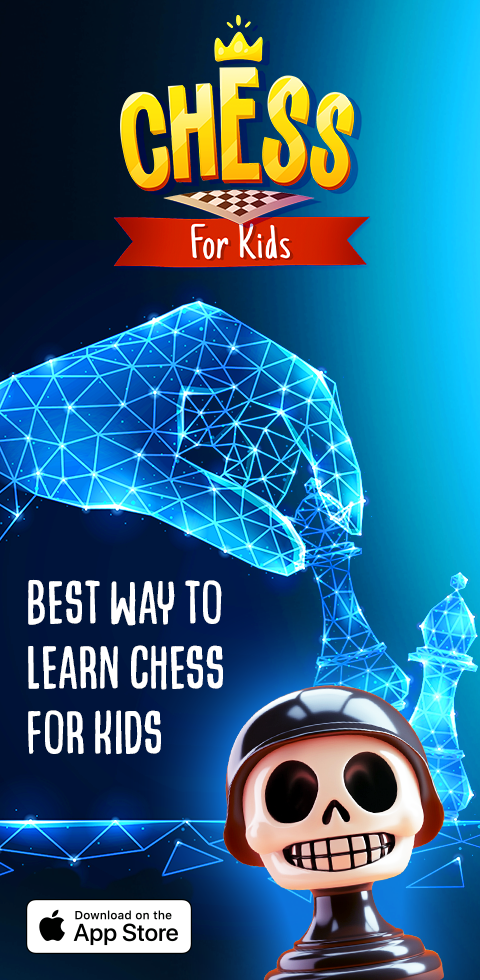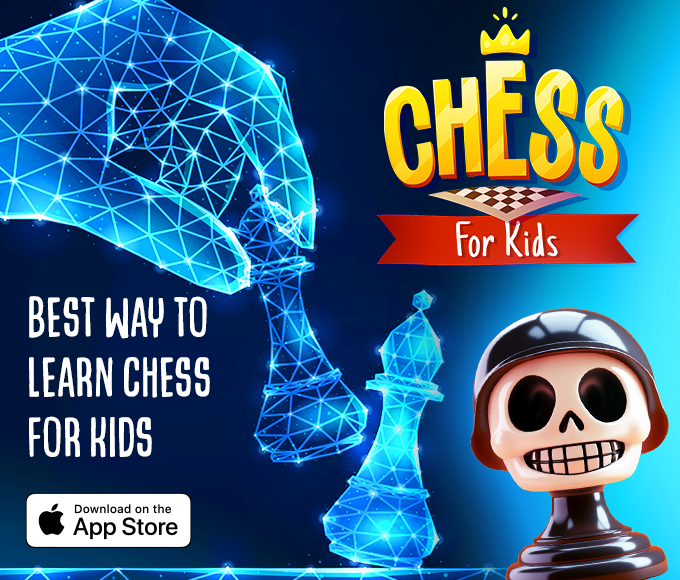Vocabulary enhancement Normal Consonants Worksheets for Ages 3-7
5 filtered results
-
From - To
Discover our engaging "Vocabulary Enhancement Normal Consonants Worksheets," specially designed for kids aged 3-7. These fun, interactive worksheets help young learners build their vocabulary by focusing on normal consonants. Through colorful illustrations and stimulating exercises, children will enhance their phonetic recognition and language skills. Each worksheet encourages essential pre-reading abilities and boosts confidence as kids learn to connect sounds to words. Perfect for parents and educators, these resources are a wonderful way to make learning enjoyable and effective. Start your child's language journey today with our easy-to-use worksheets that cater to budding readers!
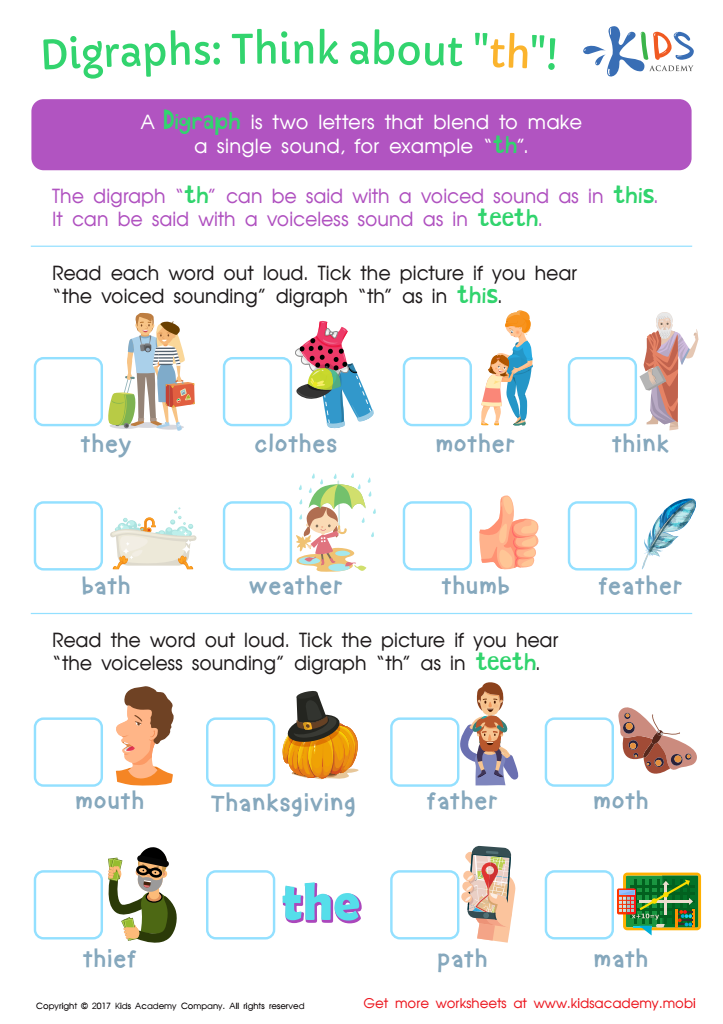

Digraphs: Think About "th" Worksheet


Shhh... What Digraph? Worksheet
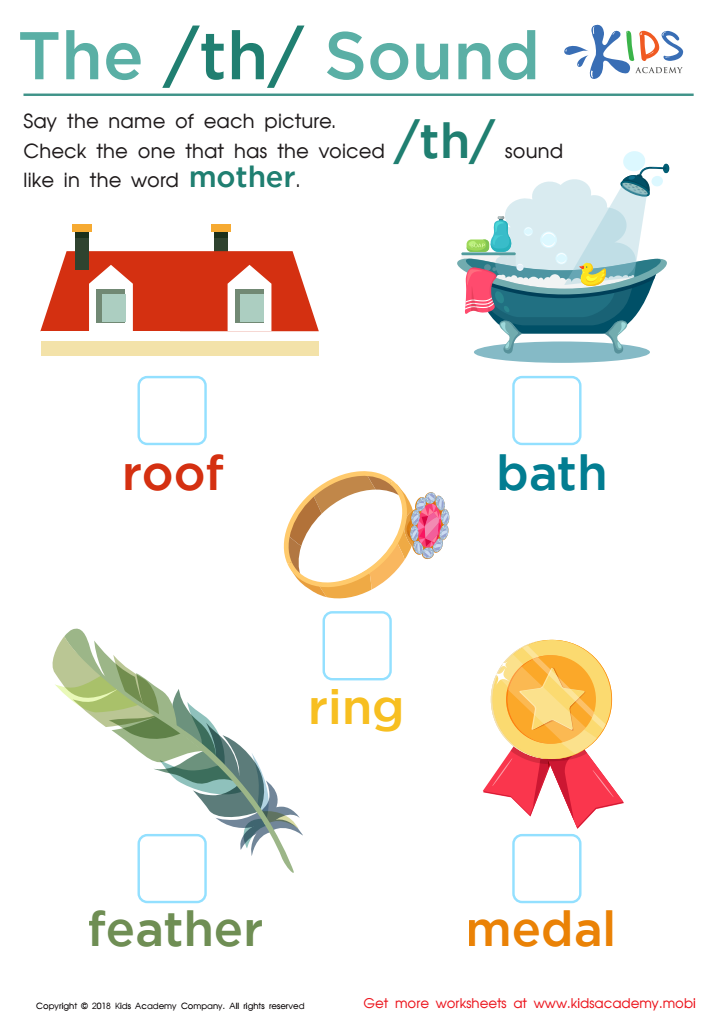

The /th/ Sound Worksheet
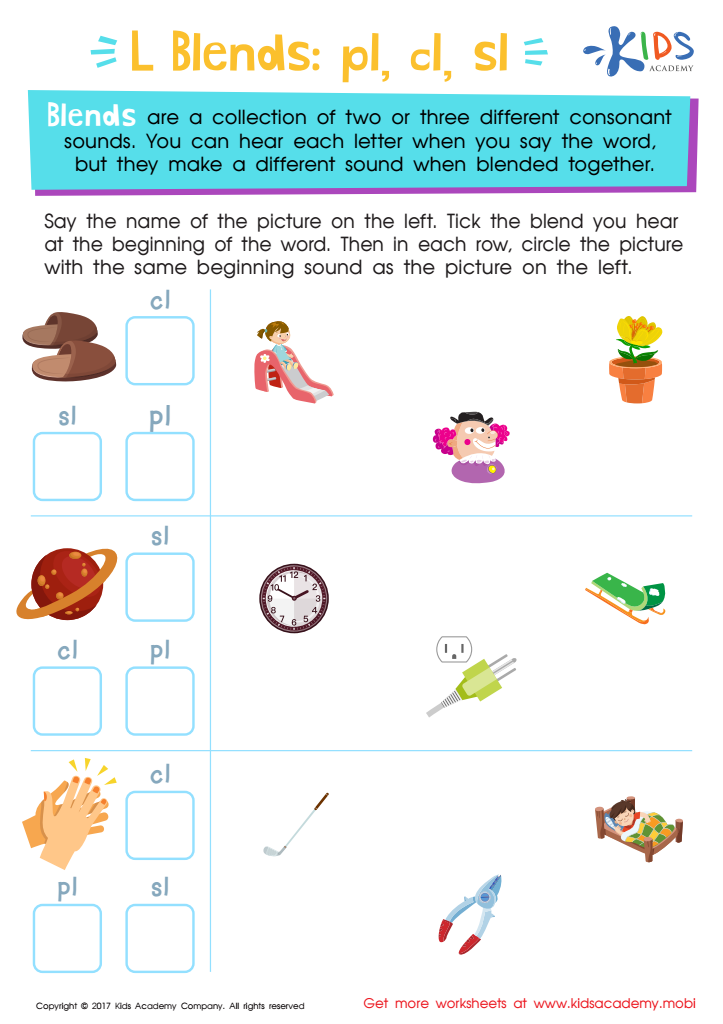

L Blends: "Pl", "Cl" and "Sl" Printable
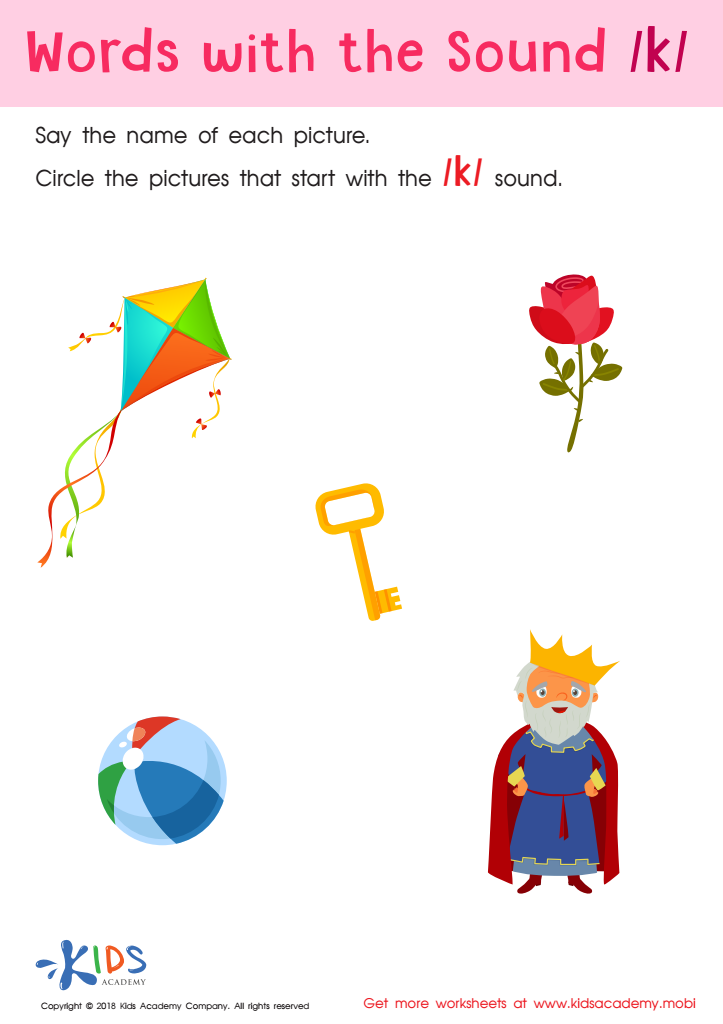

Words with sound k Reading Worksheet
Vocabulary enhancement is crucial for children aged 3-7, as it lays the foundation for effective communication, literacy skills, and academic success. Focusing on normal consonants during this period helps young learners accurately pronounce and articulate words, making their speech clearer and more understandable. Developing a strong vocabulary and pronunciation early on encourages confidence in verbal expression and fosters social skills, enabling children to articulate their thoughts and feelings in various contexts.
Parents and teachers play essential roles in facilitating this learning. Engaging in interactive activities like storytelling, rhyming games, and fun phonics exercises can enhance vowel and consonant recognition while making learning enjoyable. These activities improve cognitive skills related to language, leading to better reading and writing capabilities later on.
Moreover, a rich vocabulary enhances comprehension abilities, allowing children to more easily grasp complex concepts in subjects like math and science as they progress. Furthermore, early vocabulary building influences their social interactions and relationships with peers, contributing to their emotional development and self-esteem. Therefore, investing time in vocabulary enhancement through normal consonants not only benefits individual learners but also supports their overall educational journey. Parents and teachers must prioritize this aspect of language development for a brighter future for children.
 Assign to My Students
Assign to My Students

